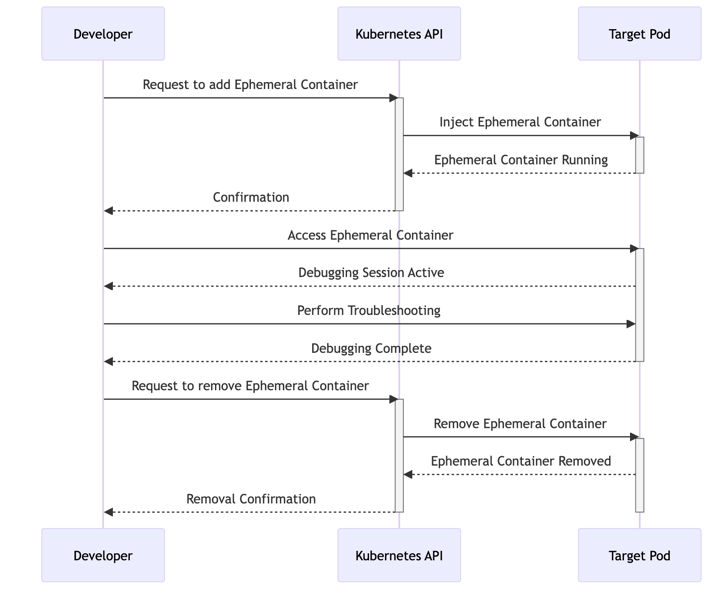In the rapidly evolving landscape of DevOps, staying ahead of system issues and bugs can be quite the challenge. Recently, I’ve been exploring a feature in Kubernetes that feels like a real breakthrough for those of us who manage complex applications: Ephemeral Containers. These are temporary containers that can be spun up within an existing Pod, and they are changing the way we approach real-time troubleshooting. Let’s dive into why they are so beneficial from an architect’s perspective.
Understanding Ephemeral Containers
Imagine we are in the middle of a critical service operation and we encounter a bug that is affecting performance. Traditional debugging methods might require you to restart the service or alter its deployment, which isn’t always ideal. Enter Ephemeral Containers. These are essentially temporary containers that we can inject into a running Pod to troubleshoot without stopping or disrupting the service. They are designed to coexist peacefully with your application containers, only there when you need them and gone without a trace once their job is done.
Why Ephemeral Containers Are a Game Changer
1. Isolation Ensures Stability
From an architectural standpoint, the isolation of Ephemeral Containers is their biggest selling point. You can conduct your diagnostics or run debugging tools in an environment that’s isolated from your main application containers. This means there’s minimal risk to your application’s stability, no matter what happens in the ephemeral container.
2. On-the-Fly Flexibility
The ability to add these containers to any running Pod without restarting it or redeploying your application is nothing short of revolutionary. It gives us architects the flexibility to respond to issues in real-time, which is crucial in a production environment where uptime is paramount.
3. Tailored Troubleshooting
With Ephemeral Containers, you can customize your debugging environment on the go. Install the specific tools you need for the job at hand, diagnose the issue, and then remove the container—it’s like having a surgical kit that’s bespoke for each operation.
Implementing Ephemeral Containers
To leverage Ephemeral Containers effectively, we can follow the steps below:
Checking for Compatibility:
Ensure your Kubernetes setup supports Ephemeral Containers (available from v1.16 onwards with the EphemeralContainers feature gate enabled).
Injecting an Ephemeral Container:
We can use kubectl’s debug command to add an ephemeral container to a Pod. For instance:
kubectl debug [POD_NAME] -it –image=busybox –target=[POD_NAME]
This command starts a BusyBox container in a targeted Pod, setting up a workspace where we can troubleshoot without affecting the running pod.
Investigating the container:
Inside the ephemeral container, we can install necessary tools and conduct investigation without affecting the host Pod’s lifecycle.
Cleanup After Debugging:
Once the debugging is complete, the ephemeral container can be disposed of without leaving any impact on the ongoing operations of the Pod.
Here is a simple diagram that shows the workflow of injecting an Ephemeral Container into a running Pod.

Architectural Best Practices
Security First: Always ensure that any tools or utilities used inside ephemeral container are secure and trusted to prevent introducing vulnerabilities.
Resource Awareness: Keep an eye on the resources your ephemeral container uses; it should not drain the main application of the resources it needs.
Documentation: Document every troubleshooting session thoroughly. This not only helps in future debugging efforts but also aids in refining your troubleshooting processes.
In conclusion, Ephemeral Containers not only bolster our troubleshooting toolkit but also embody the principles of modern system architecture guidelines—flexibility, efficiency, and robustness. Integrating this feature into an organization’s Kubernetes strategy means enhancing system’s resilience and ensuring that operations run smoothly, even under duress. As we continue to embrace such innovations, our architectures become not just more capable, but also more responsive to the needs of businesses and users.

 English | EN
English | EN 